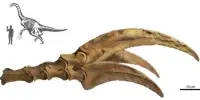The Intergovernmental Panel on Climate Change (IPCC) concluded that removing carbon from the atmosphere is now critical for combating climate change and limiting global temperature rise. To complement these efforts, Salk scientists are improving plants’ root systems to store more carbon for a longer length of time, allowing them to pull carbon dioxide from the air naturally.
Salk’s Harnessing Plants Initiative experts are designing these climate-saving plants with a sophisticated new research tool called SLEAP, which is simple artificial intelligence (AI) software that tracks several root growth parameters. SLEAP, developed by Salk Fellow Talmo Pereira, was first intended to follow animal movement in the laboratory. Now, Pereira has teamed up with plant scientist and Salk colleague Professor Wolfgang Busch to apply SLEAP to plants.
Busch and Pereira describe a new procedure for utilizing SLEAP to examine plant root phenotypes, such as how deep and wide they grow, how huge their root systems become, and other physical characteristics that were previously difficult to measure. The application of SLEAP to plants has already allowed researchers to create the most comprehensive collection of plant root system phenotypes to date.
Furthermore, tracking these physical root system features allows scientists to identify genes associated with those qualities, as well as if numerous root properties are influenced by the same genes or separately. This enables the Salk team to determine which genes are most useful for their plant designs.
We created a robust protocol validated in multiple plant types that cuts down on analysis time and human error while emphasizing accessibility and ease-of-use – and it required no changes to the actual SLEAP software.
Elizabeth Berrigan
“This collaboration is truly a testament to what makes Salk science so special and impactful,” says Pereira. “We’re not just ‘borrowing’ from different disciplines — we’re really putting them on equal footing in order to create something greater than the sum of its parts.”
Prior to the use of SLEAP, recording the physical properties of plants and animals required a significant amount of labor, which hindered the scientific process. If researchers wanted to examine a plant image, they would have to manually flag the plant-related and non-plant-related sections of the image — frame-by-frame, part-by-part, pixel-by-pixel. Only then could previous AI models be used to interpret the image and extract information about the plant’s structure.
SLEAP distinguishes itself by combining computer vision and deep learning. This combination enables researchers to interpret photos without moving pixel by pixel, skipping the intermediate labor-intensive stage and go directly from image input to predetermined plant properties.

“We created a robust protocol validated in multiple plant types that cuts down on analysis time and human error, while emphasizing accessibility and ease-of-use — and it required no changes to the actual SLEAP software,” says first author Elizabeth Berrigan, a bioinformatics analyst in Busch’s lab.
Without modifying the baseline technology of SLEAP, the researchers developed a downloadable toolkit for SLEAP called sleap-roots (available as open-source software here). With sleap-roots, SLEAP can process biological traits of root systems like depth, mass, and angle of growth. The Salk team tested the sleap-roots package in a variety of plants, including crop plants like soybeans, rice, and canola, as well as the model plant species Arabidopsis thaliana — a flowering weed in the mustard family. Across the variety of plants trialed, they found the novel SLEAP-based method outperformed existing practices by annotating 1.5 times faster, training the AI model 10 times faster, and predicting plant structure on new data 10 times faster, all with the same or better accuracy than before.
Together with massive genome sequencing efforts for elucidating the genotype data in large numbers of crop varieties, these phenotypic data, such as a plant’s root system growing especially deep in the soil, can be extrapolated to understand the genes responsible for creating that especially deep root system.
This step — connecting phenotype and genotype — is crucial in Salk’s mission to create plants that hold on to more carbon and for longer, as those plants will need root systems designed to be deeper and more robust. Implementing this accurate and efficient software will allow the Harnessing Plants Initiative to connect desirable phenotypes to targetable genes with groundbreaking ease and speed.
“We have already been able to create the most extensive catalogue of plant root system phenotypes to date, which is accelerating our research to create carbon-capturing plants that fight climate change,” says Busch, who holds the Hess Chair in Plant Sciences at Salk Institute of Science. “SLEAP has been so easy to apply and use, thanks to Talmo’s professional software design, and it’s going to be an indispensable tool in my lab moving forward.”
Pereira prioritized accessibility and reproducibility when developing SLEAP and sleap-roots. Because the software and sleap-roots toolkit are free to use, the researchers are looking forward to seeing how they are used around the world. Already, they have begun discussions with NASA scientists hoping to utilize the tool not only to help guide carbon-sequestering plants on Earth, but also to study plants in space.
At Salk, the collaborative team is not yet ready to disband; they are already working on a new challenge: processing 3D data with SLEAP. Efforts to develop, expand, and distribute SLEAP and sleap-roots will continue for years, but their application in Salk’s Harnessing Plants Initiative is already advancing plant designs and assisting the Institute in combating climate change.
















